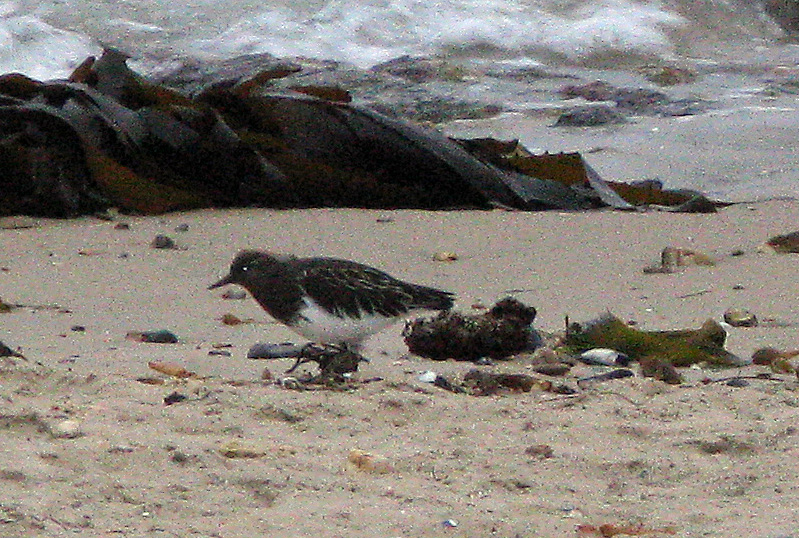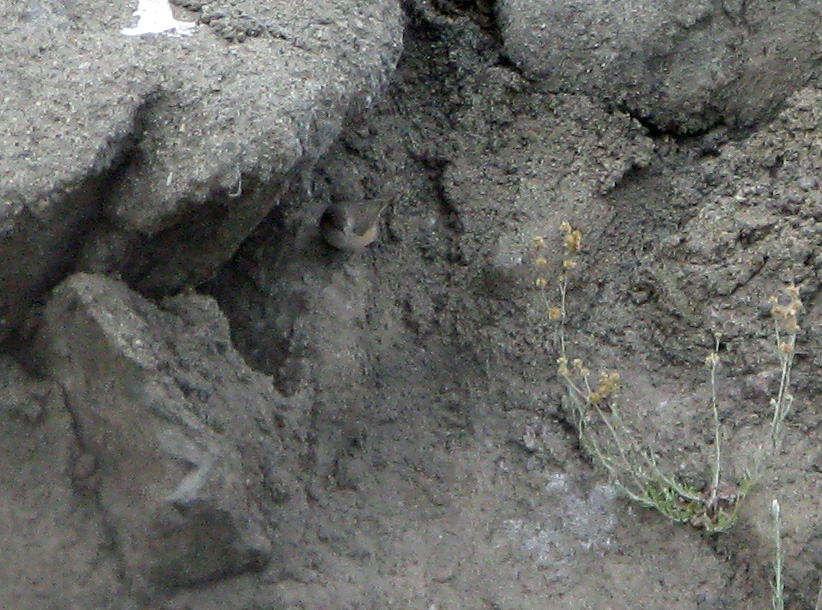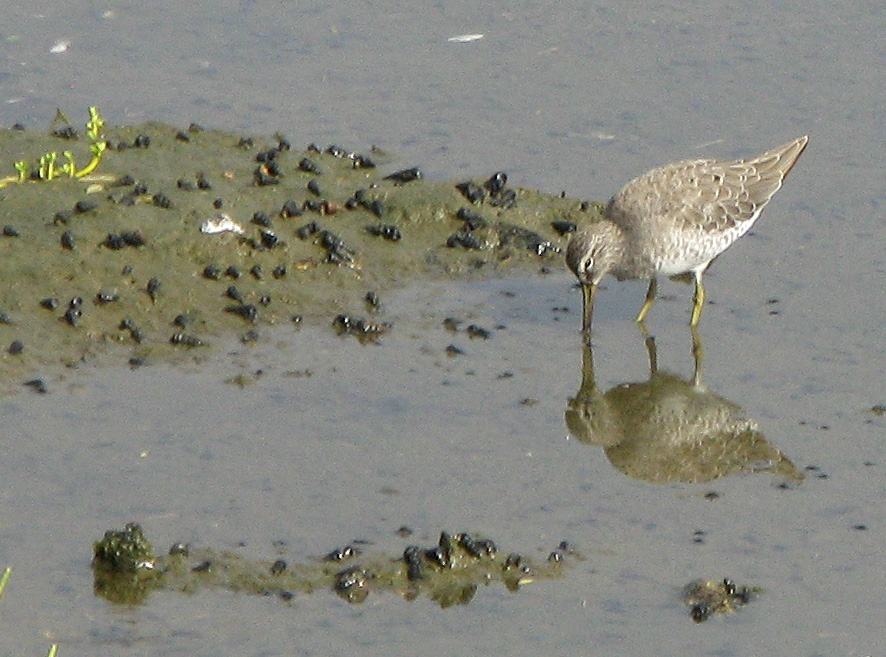I went back to Robert E. Badham Marine Life Refuge in Corona del Mar tonight after work. Unfortunately I had miscalculated the tides. I knew they’d be two hours away from where they were Tuesday, but I thought they were two hours further away from high tide and instead they were two hours closer to it. In fact,when I got there around 5:45 it was pretty damn close to high tide. I almost didn’t bother walking down from the street to the beach, but I scoped it and fortunately there were still a few birds hanging out including many Western and Hermann’s Gulls. There also appeared to be a few good shorebirds down there: some turnstones and plovers and what not.
When I reached the bottom, I found a couple of dozen Brandt’s Cormorants settling in for the night, a lone Black Phoebe, and small numbers but good variety of shorebirds: about five Black Turnstones, one Ruddy Turnstone, a Willet or two, one Sanderling, and one juvenile Black-bellied Plover. But it was while I was watching about four Black Turnstones in the flotsam, that I noticed one larger bird picking through the seaweed.
At first I thought it was another Surfbird like Tuesday’s, but the bill was much too long. A quick check of the field guide and I realized it must be the elusive Wandering Tattler, #446! It had a thin eye ring and a barely discernible white eyeline. The patterning was right, and although it was hard to make out in the fading light, through the scope you could just tell that legs were a pale yellow.
It was way too dark to get photos of this bird with my 4X point-and-shoot, but I did manage to get some photos of the Black Turnstones that I missed taking on Tuesday when I forgot my camera:

I’m going to have to try this site again at low tide and in brighter light. There are several other spots to the south I also want to check out. Wandering Tattler was the last local shorebird I could reasonably expect, but the winter gulls should be coming in soon too, and possibly some near-shore pelagic birds like shearwaters and jaegers.




